
Japan, a country where you can experience both bullet trains that arrive on the microsecond and vending machines that sell everything from underwear to live crabs, naturally extends its peculiar blend of efficiency and eccentricity to its airports.
While most countries settle for concrete terminals that smell vaguely of desperation and overpriced coffee, Japan has transformed its airports into architectural marvels that make even the most jaded business travellers snap photos like overeager tourists. Forget about killing time before your flight—in these terminals, you might find yourself purposely arriving early just to explore!
Let’s explore 10 of Japan’s most beautiful airports (in no particular order) that welcome millions of travellers each year, ensuring your journey begins with wonder and amazement.
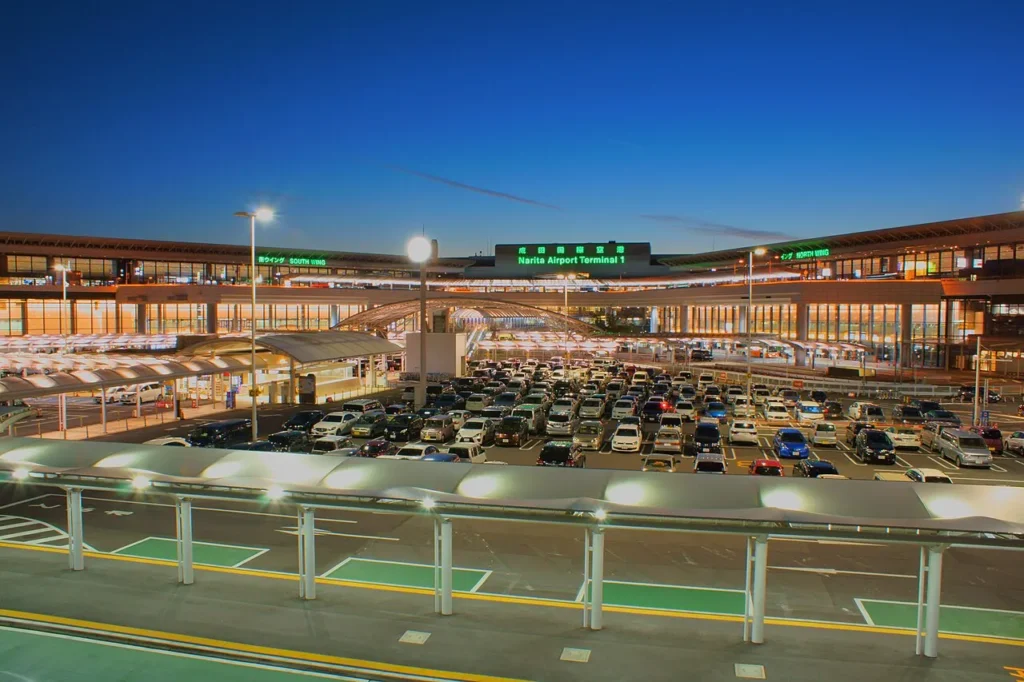 Narita International Airport; Photo- Wikipedia
Narita International Airport; Photo- Wikipedia1. Narita International Airport (NRT), Tokyo
Located about 60 kilometres east of Tokyo, Narita International Airport (NRT) serves as Japan’s primary international gateway. The airport’s Terminal 1 features a stunning 100-meter-long glass wall that floods the space with natural light, creating an airy, welcoming atmosphere.
Narita (NRT) houses an observation deck where aviation enthusiasts can watch planes take off and land while listening to actual communications between pilots and the control tower.
The airport also contains a little-known traditional Japanese garden called “Naritasan Park” between Terminals 1 and 2, perfect for stretching your legs during a layover. During cherry blossom season, this garden transforms into a pink wonderland, giving travellers an authentic Japanese experience before they even leave the airport.
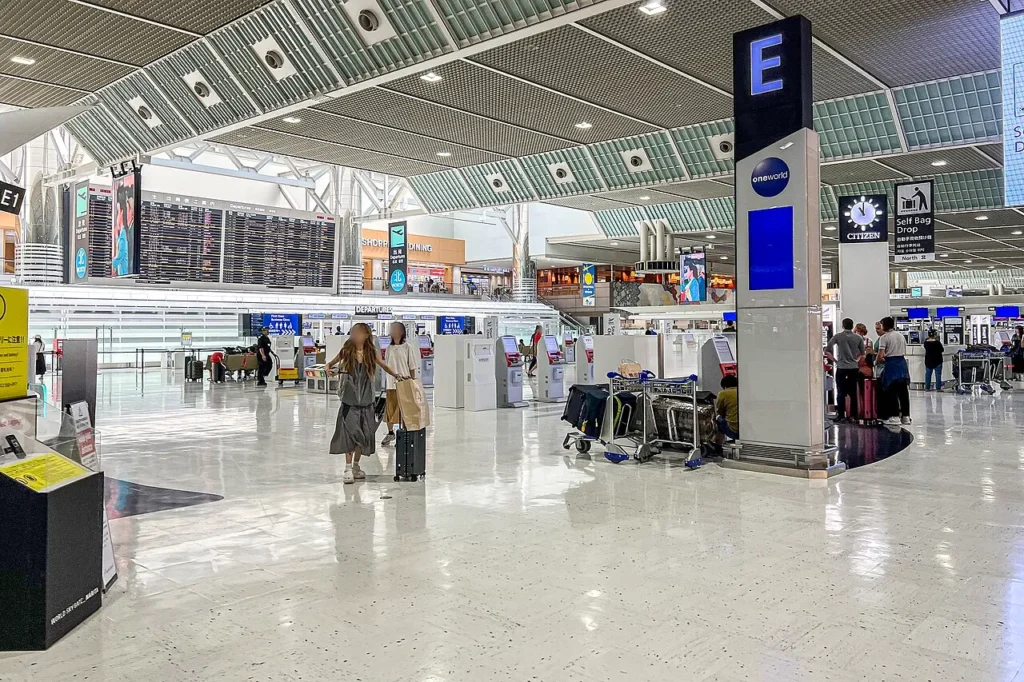 Narita International Airport; Photo- Wikipedia
Narita International Airport; Photo- Wikipedia2. Haneda Airport (HND), Tokyo
Just 14 kilometres from downtown Tokyo, Haneda Airport (HND) has transformed from a primarily domestic hub to a major international airport. Its International Terminal resembles a futuristic Japanese village, with shops designed to look like traditional machiya townhouses.
Haneda’s Terminal 2 houses a replica of the Nihonbashi Bridge from the Edo period, marking the historical starting point of Japan’s 5 major highways.
The airport operates with military precision—the average baggage delivery time is just 8 minutes after arrival, among the fastest in the world.
The observation deck offers spectacular views of Mount Fuji on clear days, making it a popular spot for both travellers and locals alike.
 Tokyo Haneda Airport; Photo- Wikipedia
Tokyo Haneda Airport; Photo- Wikipedia3. Kansai International Airport (KIX), Osaka
Built on an artificial island in Osaka Bay, Kansai International Airport (KIX) is an engineering marvel designed by renowned architect Renzo Piano. Its mile-long terminal building—once the longest in the world—curves gracefully, resembling a gliding airfoil when viewed from above.
Kansai (KIX) was built to withstand earthquakes, typhoons, and even settling into the seabed. The island has sunk over 13 meters since construction, exactly as engineers predicted! The airport’s foundations include adjustable columns that can be extended as the island continues to settle.
Despite these challenges, Kansai (KIX) has never closed due to natural disasters, even remaining operational during the devastating 1995 Kobe earthquake.
 Kansai Airport; Photo- 663highland; Wikimedia Commons
Kansai Airport; Photo- 663highland; Wikimedia Commons4. Fukuoka Airport (FUK), Fukuoka
Fukuoka Airport (FUK) holds the distinction of being one of the world’s most centrally located airports—just 2 kilometres from downtown, you can walk from your gate to the city centre in under 30 minutes.
Despite its urban location, Fukuoka Airport (FUK) operates with a strict noise reduction policy, including an unusual curfew that prohibits flights between 10 PM and 7 AM. The domestic terminal features a striking 80-meter “Light Valley” skylight that creates a dramatic play of natural light throughout the day. The airport’s international terminal houses replicas of ancient Hakata merchant houses, showcasing the city’s 1,400-year history as Japan’s gateway to Asia.
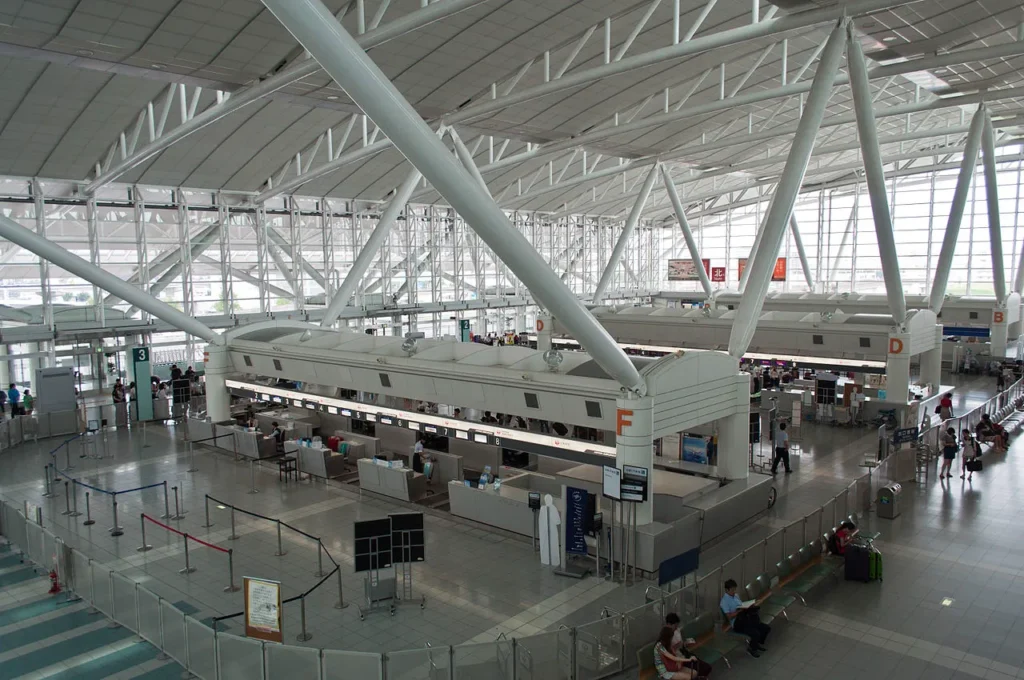 Fukuoka Airport; Photo- Wikipedia
Fukuoka Airport; Photo- Wikipedia5. Chubu Centrair International Airport (NGO), Aichi
Located on an artificial island in Ise Bay, Chubu Centrair International Airport (NGO) serves the Chūkyō metropolitan area and stands as a testament to Japanese engineering ingenuity. Its sweeping roof design evokes the image of a traditional Japanese fan.
Centrair (NGO) features Japan’s first airport bathhouse, where travellers can soak in hot springs while watching planes take off and land through panoramic windows.
The “Sky Deck” observation area includes special acoustically designed spots where visitors can experience the full thunderous roar of aircraft engines during takeoff. The airport’s “Central Japan Travel Plaza” houses a miniature theme park featuring scale models of the region’s famous attractions.
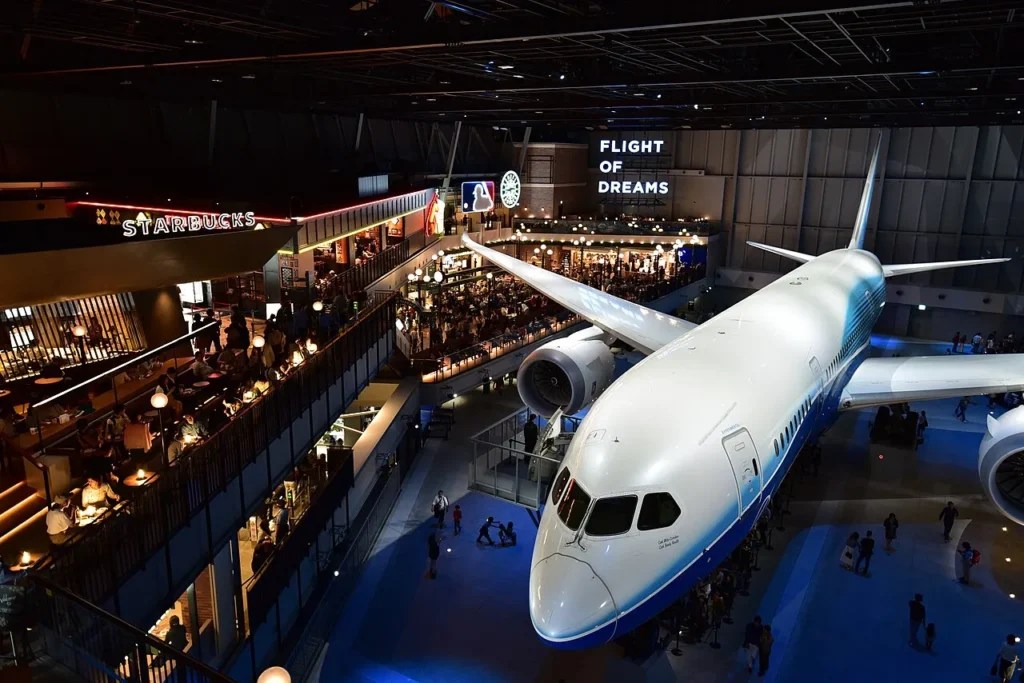 Centrair Airport; Photo- Wikipedia
Centrair Airport; Photo- Wikipedia6. New Chitose Airport (CTS), Hokkaido
As Hokkaido’s largest airport, New Chitose (CTS) serves as the gateway to Japan’s northernmost main island. The terminal design incorporates natural wood elements and expansive glass walls that showcase Hokkaido’s stunning natural landscapes.
New Chitose (CTS) contains Japan’s first airport animation movie theatre, exclusively screening films from Studio Ghibli and other Japanese animation studios 24 hours a day!
The airport houses an entire shopping mall dedicated to chocolate, highlighting Hokkaido’s dairy industry with over 200 varieties of chocolate treats. During winter, travellers can visit the terminal’s rooftop observation deck to witness the snow-removal ballet, where specialised vehicles clear runways in precisely choreographed patterns.
The airport even maintains its dairy farm, providing ultra-fresh milk and ice cream to airport restaurants!
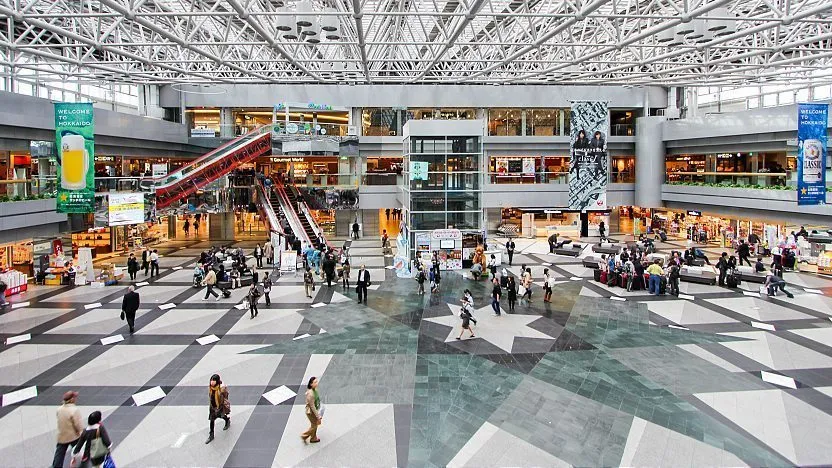 New Chitose Airport; Photo- Japan Guide
New Chitose Airport; Photo- Japan Guide7. Kagoshima Airport (KOJ), Kagoshima
Nestled among the mountains of southern Kyushu, Kagoshima Airport (KOJ) offers breathtaking views of Sakurajima, one of Japan’s most active volcanoes, and Kinko Bay.
The airport’s observation deck occasionally doubles as a volcano viewing platform when Sakurajima erupts, creating a dramatic backdrop for arriving and departing flights. The terminal incorporates design elements with distinctive rust-colored tiles and patterns throughout. For good luck, travellers touch the snout of the airport’s massive bronze statue of a local mythological figure before flights.
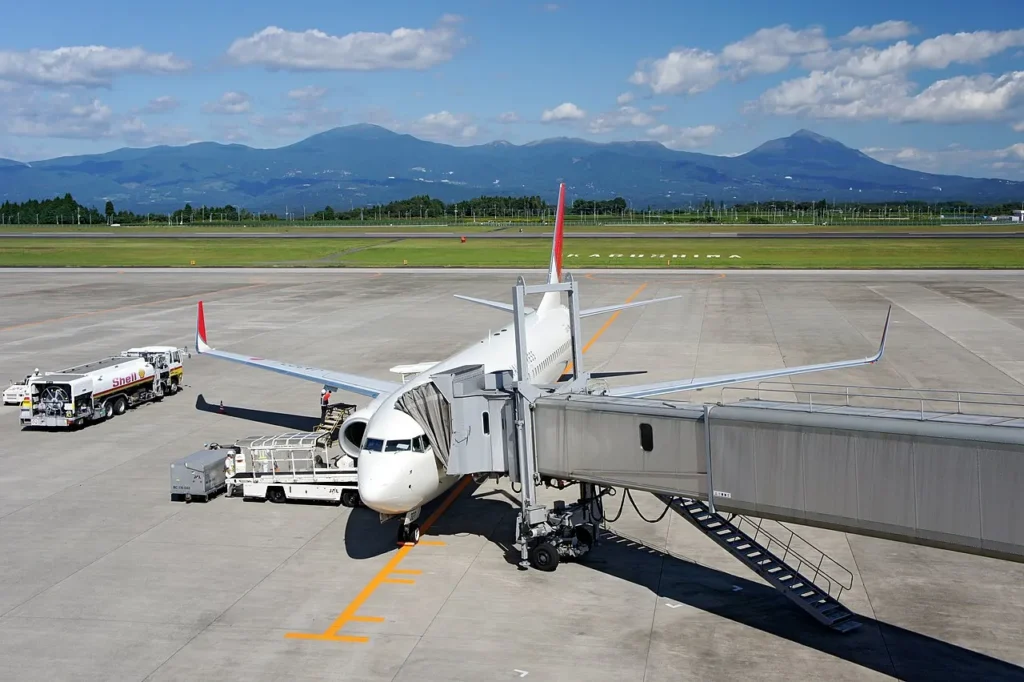 Kagoshima Airport; Photo- Wikipedia
Kagoshima Airport; Photo- Wikipedia8. Hiroshima Airport (HIJ), Hiroshima
Located 50 kilometres east of Hiroshima city, this airport is an important hub for western Japan. Its modern terminal features a distinctive wave-shaped roof symbolising peace and harmony.
The airport houses a moving Peace Memorial gallery with artefacts from the atomic bombing, creating a space for reflection before exploring the city. The terminal’s architecture incorporates subtle origami crane motifs throughout—a symbol of peace associated with Hiroshima. Local artisans regularly demonstrate traditional oyster pearl cultivation techniques in the main concourse, highlighting one of the region’s famous products.
The observation deck includes special telescopes that let visitors see as far as Miyajima Island on clear days.
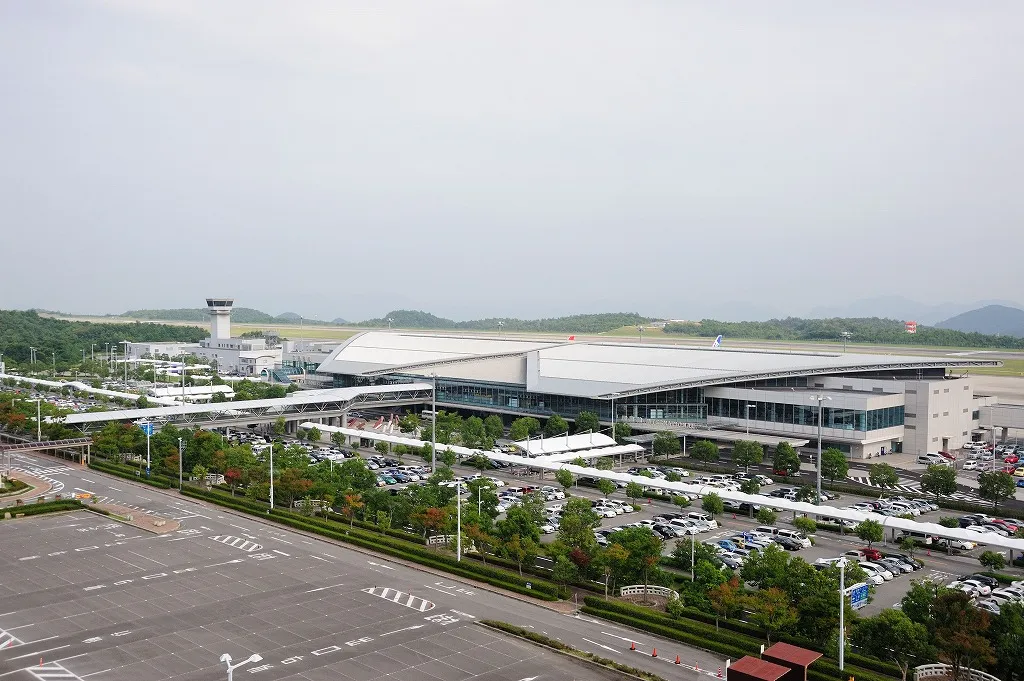 Hiroshima Airport; Photo- Wikipedia
Hiroshima Airport; Photo- Wikipedia9. Kumamoto Airport (KMJ), Kumamoto
Surrounded by the western foothills of the Aso Mountains, Kumamoto Airport (KMJ) is celebrated for its stunning scenic approach. The terminal’s elegant curved roof mirrors the surrounding volcanic landscape.
The airport serves as a sanctuary for Kumamoto’s famous mascot, Kumamon. The beloved black bear delights travellers with “surprise appearances” several times daily. The terminal features Japan’s only airport waterfall, a 15-meter indoor cascade designed to recreate the region’s famous Nabegataki Falls.
During spring, the airport’s approach road becomes one of Japan’s lesser-known cherry blossom viewing spots, with over 500 trees lining the entrance.
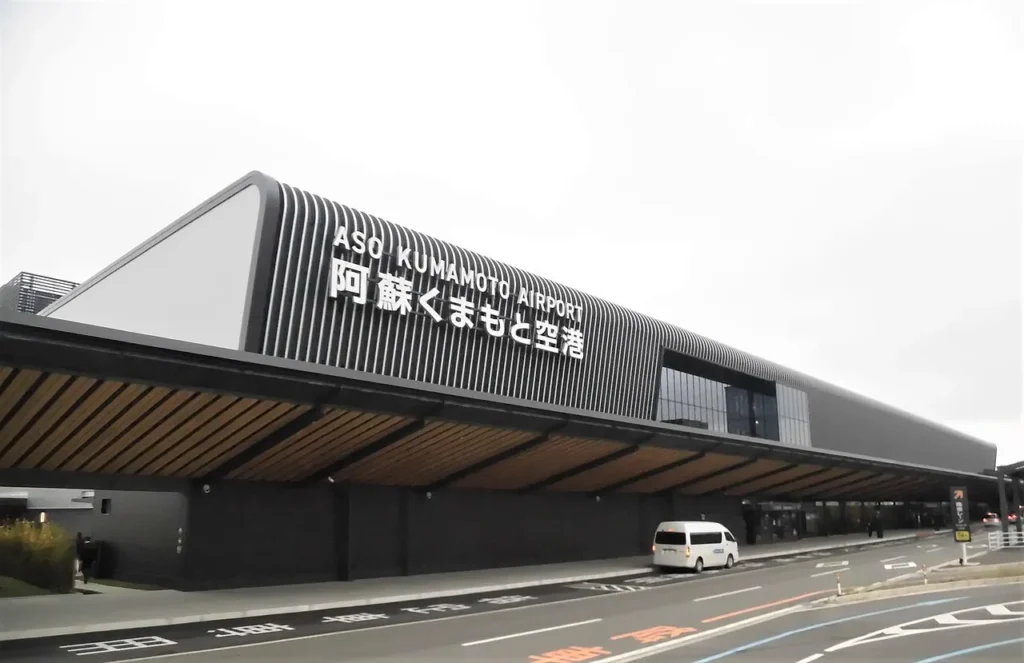 Kumamoto Airport; Photo- Wikipedia
Kumamoto Airport; Photo- Wikipedia10. Sendai International Airport (SDJ), Miyagi
Rebuilt after being severely damaged in the 2011 tsunami, Sendai Airport (SDJ) stands as a symbol of resilience and recovery. The terminal’s airy design emphasises openness and light, symbolising hope and new beginnings.
Following the 2011 disaster, the airport was remarkably restored to partial operation in just 6 days, becoming a crucial hub for relief efforts. The reconstructed terminal incorporates innovative tsunami-resistant design features, including breakaway first-floor walls that allow water to flow through rather than destroying the structure.
The airport’s ceiling features an installation of thousands of folded paper cranes sent from around the world after the tsunami, preserved as a permanent memorial.
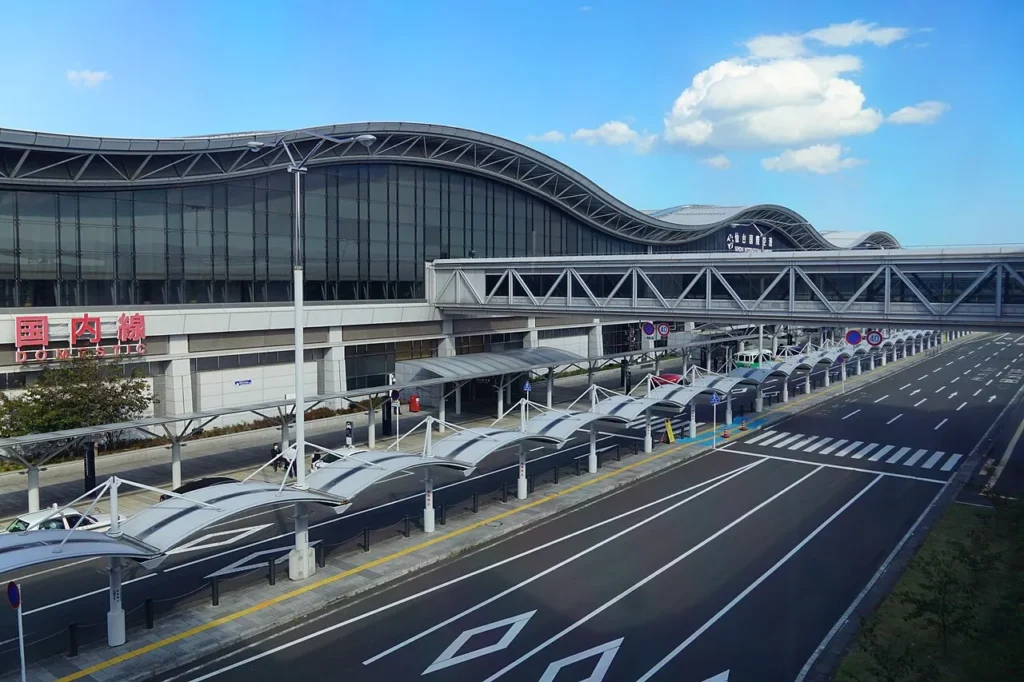 Sendai International Airport; Photo- Wikipedia
Sendai International Airport; Photo- WikipediaBottom Line
As you reluctantly drag yourself away from Japan’s magnificent airports (possibly the only time in human history anyone has felt sad to leave an airport), you might find yourself wondering if you need to see the rest of the country.
After all, you’ve already experienced robot attendants, indoor gardens, hot springs with runway views, and enough quirky vending machines to satisfy even the most impulsive shopper.
So gather your belongings, bid a fond farewell to the terminal that’s ruined all other airports for you forever, and step outside. Japan proper awaits, where the truly weird and wonderful adventures begin. Just remember to schedule an extra few hours for your departure flight; you’ll need them to say proper goodbyes to your new favourite airport.
Stay tuned with us. Further, follow us on social media for the latest updates.
Join us on Telegram Group for the Latest Aviation Updates. Subsequently, follow us on Google News
10 Cleanest Airports in the World in 2025
The post 10 Most Beautiful Airports in Japan appeared first on Aviation A2Z.












![[20.05.2025] O bezpieczeństwie nad wodą podczas pikniku](https://powiat-legionowski.pl/img/artykuly/1/2025_05/499479202-1123648463124192-1948444526499126446-n.jpg)



